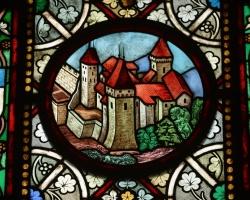I constantly am amazed by the popularity of reality TV shows. They aren’t just entertainment; they’ve changed the way viewers watch TV, allowing viewers to alter the outcome of the action!
These shows teach us about how people, especially young people, hunger to participate and interact. This truth also applies to worship.
Students don’t want to sit and watch or stand and sing. They want to participate! They want to be involved and interact with God, not just hear about Him. They want to participate and even change the course of what happens during a worship gathering.
This kind of thinking is risky and takes a lot of work, but the rewards of seeing your students engage God and use their gifts to His glory is worth it all.
All worship gatherings involve a liturgy, which means an order of service that includes the various elements of the gathering (prayers, video clips, Scripture readings, teaching, music, etc.). Whether you use the term liturgy, having one provides a framework for worship. The word actually means “the work of the people.”
People or Professionals?
How can we make our worship gatherings the “work of the people,” not just the work of the paid professional leaders? How can we move our gatherings from sitting, listening, standing and singing into participation and experience?
First, we must begin to see the worship leader’s job as that of a curator rather than the person who puts together the worship set. My friend Mark Pierson, a pastor in Australia, first introduced me to this concept.
An art curator chooses the works of art and decides how best to display them. (He or she “hangs” the art in order to set a mood, relate a theme and help the observer embrace the works.) Likewise, the worship curator collects the gifts and talents of a group and helps create a cohesive whole.
For example, rather than having one person lead in prayer, a curator might have a student write the opening prayer, then invite the community to pray it aloud together.
Instead of using a pre-packaged video or photograph, have students take pictures or make a video that conveys your theme.
Instead of having a traditional worship/singing set, have a student create a play list to loop during the gathering; or have them select a song to listen to as a group and respond by journaling or drawing. You also may find an artistic student to create something from the Scripture or theme of the day and have that artist bring in the piece for the worship gathering.
Gifts and Givers
The curator’s job is to help bring these gifts together and get as many people into the process as possible. It involves learning about the gifts and talents of your students and allowing them to be part of the worship experience. Ask questions; invite people to participate; don’t expect people just to jump in.
Curating takes time and energy, and it can be messy. It’s not as easy as arranging a worship set and teaching. Being a curator involves practice. The results won’t be perfect the first time, but they will reflect God’s kingdom, a type of human tapestry of His love flowing from your community.
Participation and creativity will happen more and more as you give your students permission to share the variety of gifts God has given them beyond preaching and singing.




